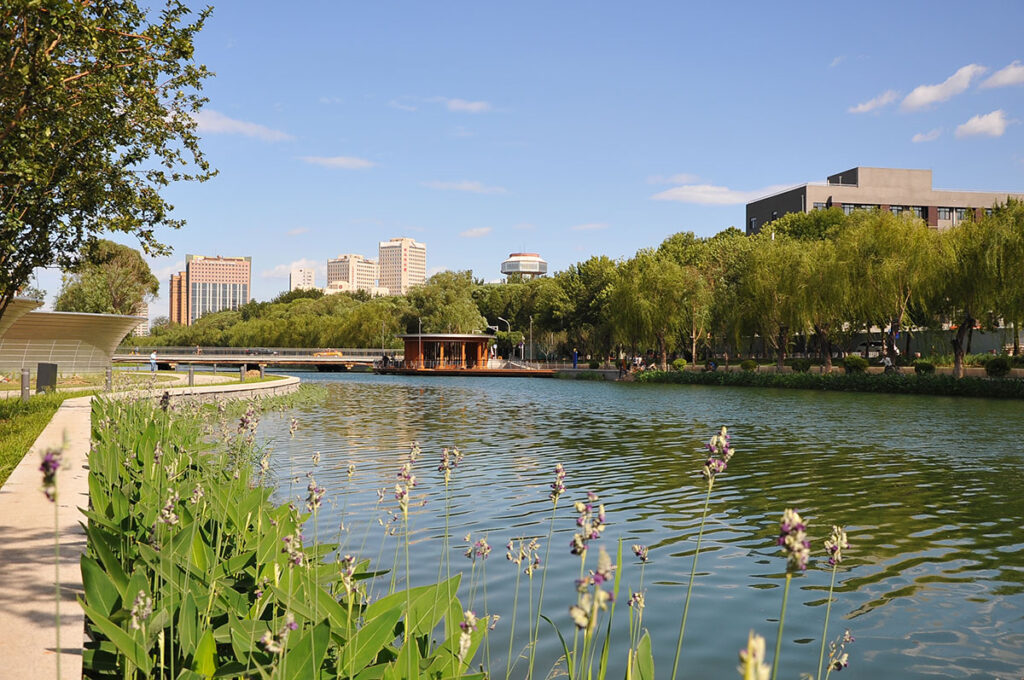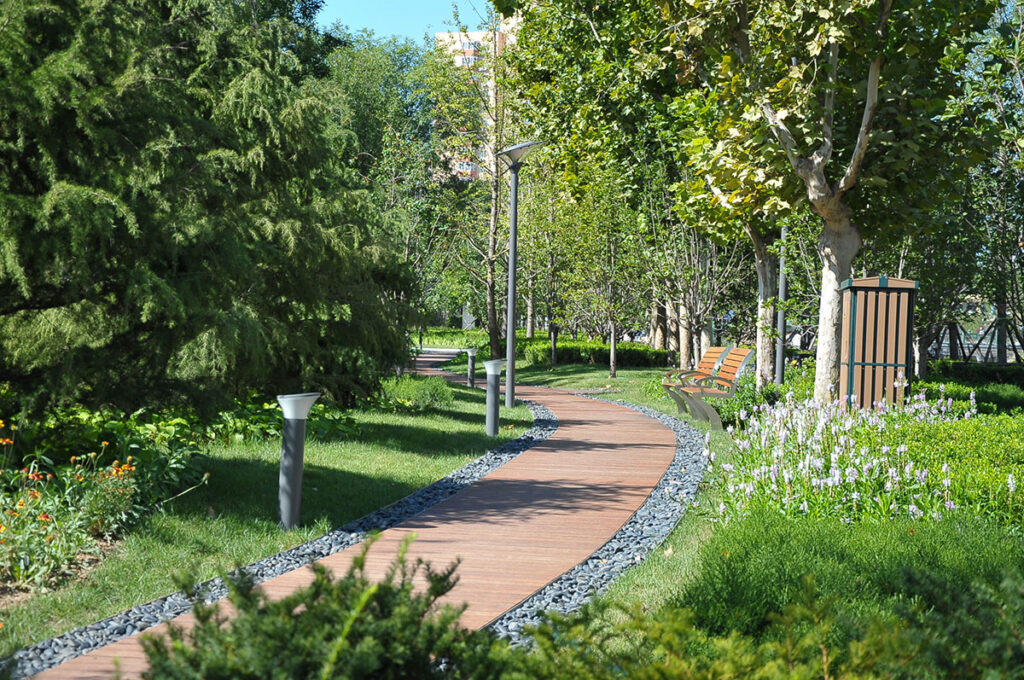As the design consultant, AECOM coordinated multiple teams, including water, ecology, bridge, and lighting design, to renovate the Liangma River and its surrounding landscapes. Our project team aimed to create high-quality waterfront spaces with enhanced urban ecology, rejuvenating not only the river itself but also the surrounding area and the city. Today, the Liangma River serves as a beloved public space for citizens and contributes to the formation of a distinctive urban blue economic belt in Beijing.

With a prominent location in Chaoyang District, the landscape corridor spans 5.575 kilometers along the river, which is close to popular areas such as the diplomatic district, Sanlitun, Qihao Tower, Yansha Friendship Shopping Mall, Kempinski Hotel, Blue Harbor and Chaoyang Park. The banks and surrounding areas host a diverse range of businesses, covering a total construction area of 80.13 hectares.


With ongoing urban renewal in the capital city, the importance of the Liangma River as a key public waterfront space in Chaoyang District has gradually gained prominence and now becomes a significant part of Beijing’s updated overall urban planning. At this point, its function and role have evolved: it serves not only flood control and drainage needs but also functions as a green cultural and recreational waterfront for citizens.
Our design core is to interpret its significance to the city, create more green public spaces, open up possibilities for use, and inspire a new urban vitality in the region. The project is divided into four main sections: “Leisure and Relaxation Waterfront,” “Cross-Culture Communication Waterfront,” “Business Vitality Waterfront,” and “Natural Ecology Waterfront.” Furthermore, by integrating riverfront landscapes with adjacent businesses, the riverfront development model has now shifted from merely “backing onto the river” to actively “embracing the river”, fostering renewed vitality and providing opportunities for upgrading businesses and economic development in the surrounding area.


We proposed an innovative concept of “Creating a seamless integration of buildings, green spaces, and water”, while considering the needs of residents and businesses. The previously fragmented and unsystematic public spaces on both sides of the river have been reorganized into a 5.5-kilometer-long blue-green scenic corridor with diverse characteristics and comprehensive public service facilities, transforming it into accessible “green water and green mountains” for everyone.

